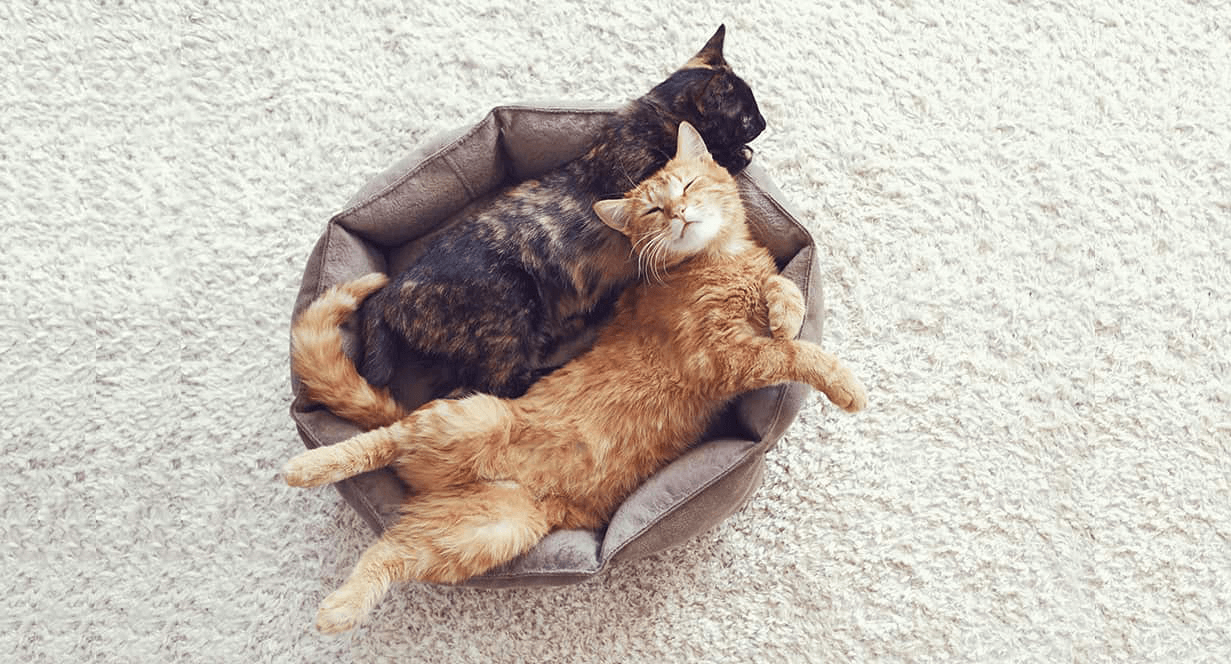

Humans aren’t the only ones affected by allergies. Like you, your adult cat can suffer from allergic reactions to any number of things in the air, on her skin and in her food. Allergies must be diagnosed and treated by a veterinarian, but first you must know what to look for.
Four of the most common types of allergies that might affect your cat are inhalant, food, contact and flea allergies.
Inhalant allergies in cats are caused by the same common allergens that affect you: dust, grass, trees, mold, pollen, ragweed and so on. They can be seasonal or persistent, and while some breeds may experience the same sniffly, sneezy symptoms humans often suffer, skin reactions are most common. Inhalant allergies can often be treated with the same medications you take, but please don’t treat your cat’s allergies without veterinary supervision.
Food allergies in cats can be the most difficult to diagnose and manage. Treatment involves a hit-or-miss approach involving a restricted diet and the gradual reintroduction of possible allergens to determine the culprit. Skin reactions to food allergies are common in cats, but frequent vomiting or diarrhea also can be a sign. Keep in mind that if your cat’s diet changes (or she just ate something she wasn’t supposed to), she may experience an episode of vomiting or diarrhea. This doesn’t necessarily mean your cat has an allergy. Watch and see if it becomes a persistent problem before scheduling a trip to the vet.
You might be surprised to learn that most cats are only vaguely bothered by fleas. But those that are allergic can suffer — and so can their owners. Contact and flea allergies generally cause skin irritation in cats and are treated topically. Cats with contact and flea allergies often chew their skin raw, leading to hair loss, odor and infection, so fastidious flea control is a must.
The most common allergy symptoms in cats are skin reactions, regardless of the cause, and they can appear at any age. Just because your cat didn’t have allergies as a kitten doesn’t mean she won’t have them as an adult. If your cat suffers from any of the following symptoms, take her to the vet for a consultation:
Allergies can vary from cat to cat, so it is important that you work with your vet to make sure your cat gets the best possible treatment. You’ll both be happier as a result.


Thinking about getting another cat? Of course you are — they’re the best. Adding a second cat (or third … or fourth …) to your home can be exciting, but there’s a lot to consider before introducing another cat into the mix.
When it comes to cats, the more, the merrier, right? Well, sometimes. Some cats thrive with a playmate or two, while others are more content solo. Personality and age are two factors to consider before bringing home another cat.
It’s important to understand your cat’s temperament when thinking about adding another cat to the mix. It’s just like dating: Compatibility is crucial. Is your pet energetic and playful? Shy and gentle? A couch potato probably isn’t the best match for a marathon runner. Your best bet is to look for a cat with a similar energy level and personality. Not sure about your cat’s vibe? Read more about cat temperament here.
Similar to temperament compatibility, age is also an important factor. Your greatest chance for success is to introduce a new cat into your household when your current cat is still a youngster. If you have an older cat who’s been master of their domain for a long time (read as: cranky), they’re more likely to become territorial and hostile toward the new addition. That’s not to say it can’t be done; the introduction will just need to be handled more delicately than when introducing two younger cats or kittens.
So you’ve found a new cat you can’t wait to bring home to your growing fur family. While it may be tempting to simply put all cats in a room and let them work out the introductions, this can cause a lot of stress for new and resident cats alike. Here are a few ways to help the introduction go smoothly.
Double the cats means double the supplies needed. Before you bring your new addition home, make sure you have plenty of toys, scratching posts and lounging spots so territorial standoffs are less likely. The rule of thumb is to have one more litter box than you do cats, so if you’re becoming a two-cat household, you’ll want to have three litter boxes. You’ll also need double the food, so consider buying in bulk so you can spend less time making trips to the store and more time snapping pics of your adorable new addition.
Give your new kitty a space of their own with a door that can be shut before doing a formal introduction with the existing cat. This will give both cats a chance to adjust to the other’s smell. Once you’re ready to have their official meeting, keep the initial interactions short and well supervised. If things start to feel tense, separate the cats and give them a chance to settle down before trying again. Don’t be discouraged; they’ll come around.
Adding another cat to your household is not without challenges, but it will ultimately bring immense joy to you and your family — and hopefully to your current cat. Or maybe we just shoot for indifference. Now what are you waiting for? Head to your local shelter today!